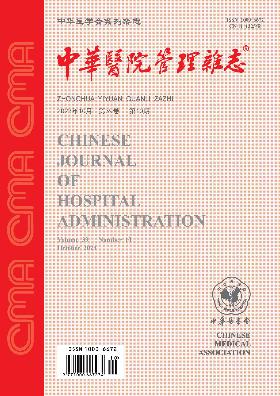Standardization-based research on fiscal compensation measurement for communities in Shanghai
引用次数: 0
Abstract
Objective To determine the standardized workload first of all. Then based on such workload, to establish the government′s resource input and allocation mechanism, and build the post setup, a fiscal compensation system, and the salary distribution mechanism of community medical staff. Methods This study selected 65 community health centers in Shanghai′s downtown area, suburban area and outer suburbs as sample units to investigate with questionnaires such indicators as community medical and health expenditure, standardized workload among others.With the measured workload as basis, item costs of health services at Shanghai′s communities were calculated. Results That of downtown, suburban and suburban areas accounted for 71.60%, 72.13% and 73.14% respectively of the total expenditure on health care.The unit cost of standardized workload varies with areas, while that in suburban and suburban areas was significantly higher than that downtown.The actual fiscal compensation was 20% lower than the target compensation as designed in the reform. Conclusions The ideal investment of basic public health services based on standardized workload can effectively realize the equalization of services among areas and promote effective allocation of resources.At the same time, estimates of the total standardized workload from the perspective of the demand side, and determination of an ideal investment ceiling for the investment of areas′ services budgets, can effectively minimize the waste of resources. Key words: Community health; Cost accounting; Standardized workload; Fiscal input; Shanghai基于标准化的上海市社区财政补偿计量研究
目的首先确定标准工作量。在此基础上,建立政府资源投入和分配机制,建立社区医务人员的岗位设置、财政补偿制度和薪酬分配机制。方法选取上海市区、近郊区和远郊区的65家社区卫生中心为样本单位,采用社区医疗卫生支出、标准化工作量等指标进行问卷调查。以实测工作量为基础,对上海市社区卫生服务项目成本进行了测算。结果市区、近郊区和近郊区医疗卫生支出分别占医疗卫生支出总额的71.60%、72.13%和73.14%。标准化工作量的单位成本因地区而异,而郊区和郊区的单位成本明显高于市中心。实际财政补偿比改革中设计的目标补偿低20%。结论以标准化工作量为基础的基本公共卫生服务的理想投入,可以有效地实现地区间的服务均等化,促进资源的有效配置。同时,从需求方的角度估计总的标准化工作量,并确定地区服务预算投资的理想投资上限,可以有效地最大限度地减少资源浪费。关键词:社区卫生;成本核算;标准化工作量;财政投入;上海
本文章由计算机程序翻译,如有差异,请以英文原文为准。
求助全文
约1分钟内获得全文
求助全文

 求助内容:
求助内容: 应助结果提醒方式:
应助结果提醒方式:


